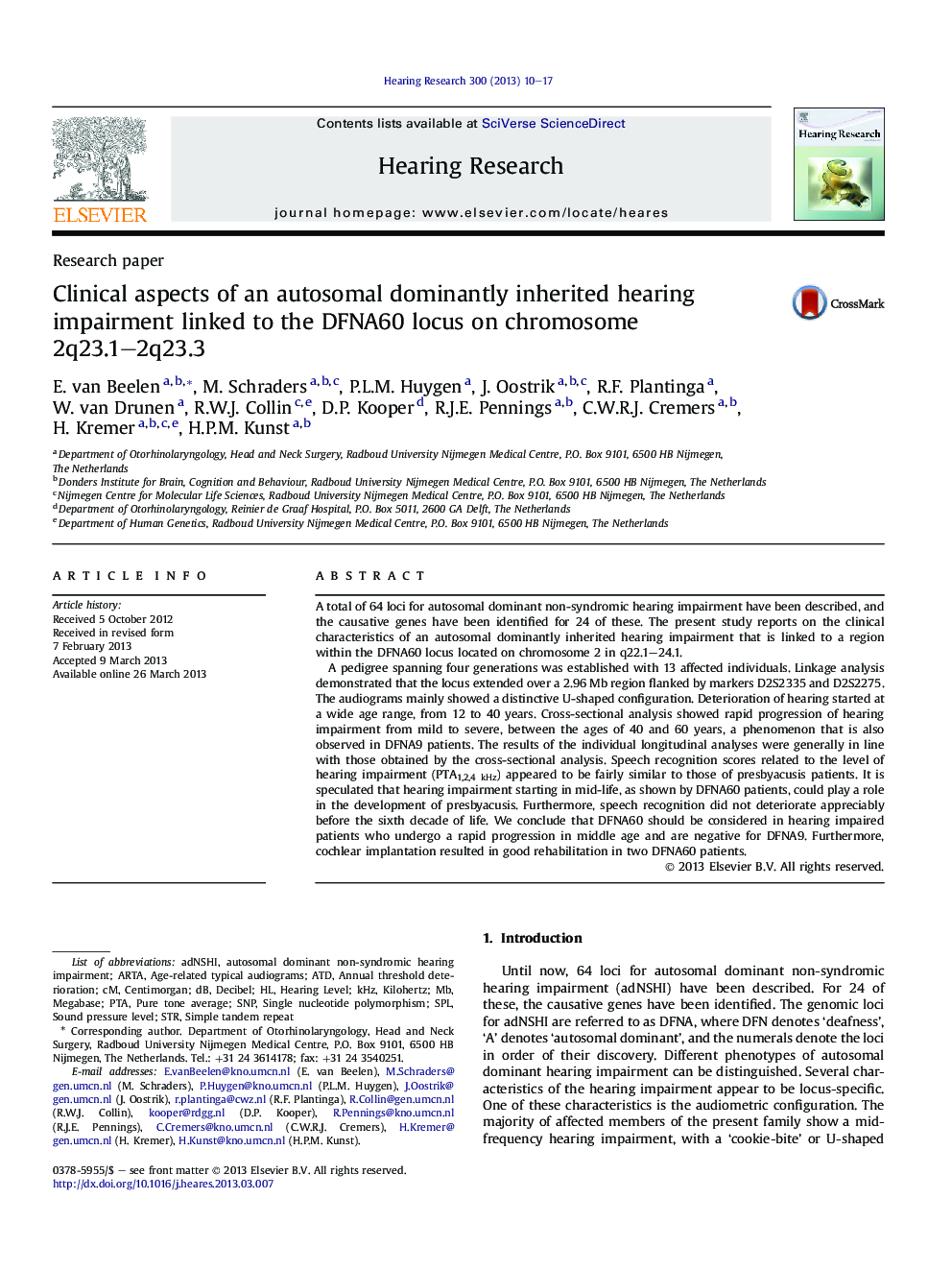| کد مقاله | کد نشریه | سال انتشار | مقاله انگلیسی | نسخه تمام متن |
|---|---|---|---|---|
| 4355175 | 1615600 | 2013 | 8 صفحه PDF | دانلود رایگان |

• adNSHI linked to the DFNA60 locus on chromosome 2 in q23.1–23.3.
• Rapid progression of hearing impairment between the ages of 40 and 60 years.
• Good rehabilitation results with cochlear implantation.
A total of 64 loci for autosomal dominant non-syndromic hearing impairment have been described, and the causative genes have been identified for 24 of these. The present study reports on the clinical characteristics of an autosomal dominantly inherited hearing impairment that is linked to a region within the DFNA60 locus located on chromosome 2 in q22.1–24.1.A pedigree spanning four generations was established with 13 affected individuals. Linkage analysis demonstrated that the locus extended over a 2.96 Mb region flanked by markers D2S2335 and D2S2275. The audiograms mainly showed a distinctive U-shaped configuration. Deterioration of hearing started at a wide age range, from 12 to 40 years. Cross-sectional analysis showed rapid progression of hearing impairment from mild to severe, between the ages of 40 and 60 years, a phenomenon that is also observed in DFNA9 patients. The results of the individual longitudinal analyses were generally in line with those obtained by the cross-sectional analysis. Speech recognition scores related to the level of hearing impairment (PTA1,2,4 kHz) appeared to be fairly similar to those of presbyacusis patients. It is speculated that hearing impairment starting in mid-life, as shown by DFNA60 patients, could play a role in the development of presbyacusis. Furthermore, speech recognition did not deteriorate appreciably before the sixth decade of life. We conclude that DFNA60 should be considered in hearing impaired patients who undergo a rapid progression in middle age and are negative for DFNA9. Furthermore, cochlear implantation resulted in good rehabilitation in two DFNA60 patients.
Journal: Hearing Research - Volume 300, June 2013, Pages 10–17